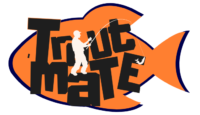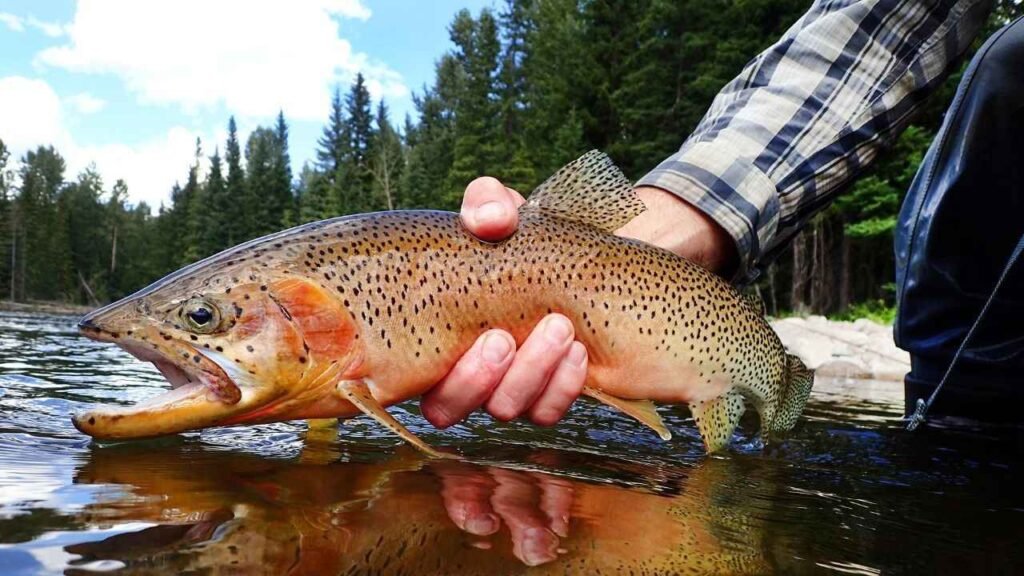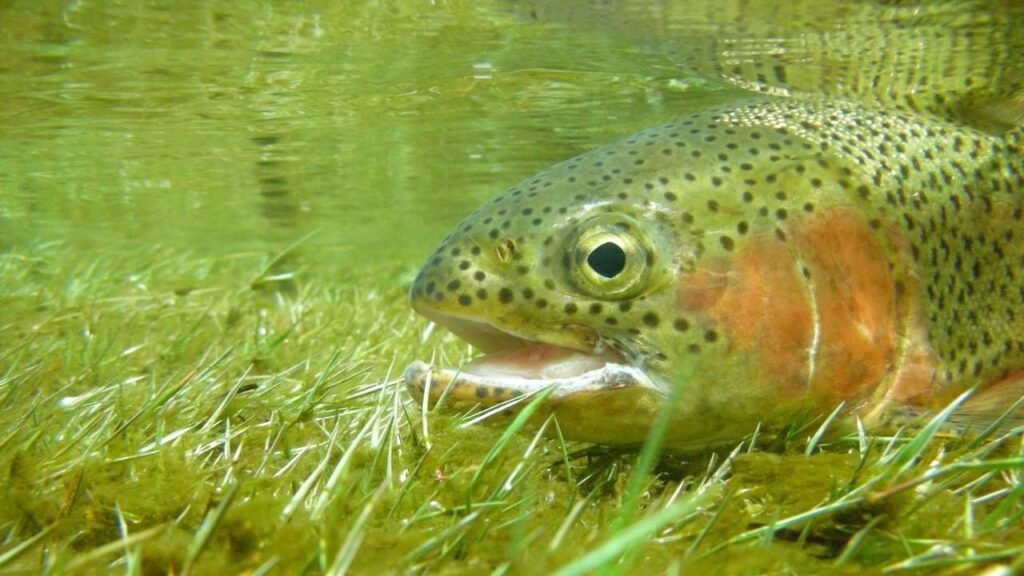To catch trout, find clear, cold water and use natural bait or lures that mimic their food. Look for shaded areas and current seams.
Trout fishing offers a rewarding experience for anglers of all skill levels. These fish thrive in pristine environments, making it crucial to seek out clear, cold waters. Trout prefer areas with ample cover and steady currents, so focus on shaded spots and seams where water flow changes.
Using the right bait or lures, like worms or artificial flies, greatly increases your chances of success. Observing the trout’s natural habitat and behavior helps in selecting the most effective techniques. Understanding these key elements ensures a productive and enjoyable fishing trip.
Choosing The Right Gear
Choosing the right gear is crucial for a successful trout fishing trip. The right equipment ensures you have a fun and productive day on the water. Let’s dive into the essential gear you need.
Rods And Reels
When selecting a rod and reel, consider the type of trout fishing you plan to do. There are different rods and reels for fly fishing, spin fishing, and baitcasting.
- Fly Rods: Lightweight and flexible, perfect for casting light flies.
- Spinning Rods: Versatile and great for beginners, can handle various lures.
- Baitcasting Rods: Offer more control and accuracy, ideal for experienced anglers.
Ensure the rod length matches your fishing environment. Shorter rods are better for tight spaces. Longer rods are suitable for open waters.
Lines And Leaders
The right line and leader are vital for effective trout fishing. Lines come in different types and strengths. Leaders help present the bait naturally.
| Type | Description |
| Monofilament Line | Stretchy and easy to handle, great for beginners. |
| Fluorocarbon Line | Less visible underwater, ideal for clear waters. |
| Braided Line | Strong and sensitive, perfect for heavy cover. |
Leaders should be strong yet thin enough to avoid spooking the fish. Use leaders around 7-9 feet long for optimal performance. The leader’s strength should match the size of the trout you are targeting.
Having the right gear makes trout fishing enjoyable and successful. Equip yourself with the best rods, reels, lines, and leaders for the best results.
Credit: www.reddit.com
Selecting The Best Baits
Choosing the right bait is crucial in trout fishing. The correct bait can increase your chances of catching trout. Here, we will explore live baits and artificial lures. Both have unique benefits for catching trout.
Live Baits
Live baits are a popular choice for trout fishing. They attract trout with their natural movement and scent. Common live baits include worms, minnows, and insects.
Worms are versatile and easy to find. They are effective in various water conditions. Simply hook them and cast your line. Trout find their wriggling motion irresistible.
Minnows are small fish that mimic the trout’s natural prey. They work well in both rivers and lakes. Hook them through the back or lips for the best results.
Insects like grasshoppers and crickets also make great bait. They float on the water surface, attracting trout from below. Use a small hook to secure them properly.
| Live Bait | Advantages |
| Worms | Easy to find, effective in various waters |
| Minnows | Mimic natural prey, work in rivers and lakes |
| Insects | Float on surface, attract trout from below |
Artificial Lures
Artificial lures come in many shapes and colors. They are designed to mimic the appearance of trout prey. These lures can be used repeatedly, making them cost-effective.
Spinners are popular for their flashy blades. The spinning action attracts trout by imitating small fish. Use them in clear water for the best visibility.
Spoons have a curved shape that wobbles in the water. This action mimics an injured fish, making them irresistible to trout. Choose spoons with bright colors for murky waters.
Soft Plastics resemble worms, grubs, or minnows. They are flexible and durable. Rig them on a jig head for a more natural presentation.
| Artificial Lure | Advantages |
| Spinners | Flashy, mimic small fish, great in clear water |
| Spoons | Wobble action, mimic injured fish, good in murky water |
| Soft Plastics | Flexible, durable, natural presentation |
Understanding Trout Behavior
Trout fishing can be a thrilling and rewarding experience. Understanding trout behavior is key to a successful fishing trip. Knowing their feeding patterns and habitat preferences helps anglers catch more fish. This guide will help you understand how trout behave in their natural environment.
Feeding Patterns
Trout are opportunistic feeders. They eat a variety of prey, including insects, small fish, and crustaceans. Their feeding habits change throughout the day and seasons. In the early morning and late evening, trout are more active and likely to feed near the surface. During the midday, they often move to deeper waters.
Trout have excellent vision. They can spot their prey from a distance. Using natural-looking baits and lures increases your chances of success. Pay attention to the types of insects around the water. Matching your bait to the local insect population can be very effective.
Habitat Preferences
Trout prefer cold, clean, and well-oxygenated water. They thrive in rivers, streams, and lakes with plenty of cover. Look for areas with rocks, logs, and overhanging vegetation. These spots provide shelter and abundant food sources.
Each species of trout has specific habitat preferences:
- Brook trout: Found in small, cold streams with lots of shade.
- Rainbow trout: Prefer larger rivers and lakes with moderate current.
- Brown trout: Often inhabit deeper pools in rivers and lakes.
Water temperature is crucial for trout. They are most active in water between 50-60°F (10-15°C). During hot weather, they seek cooler, deeper waters. Using a thermometer helps you find the optimal fishing spots.
Monitoring water conditions improves your fishing success. Check for recent rainfall or changes in water levels. These factors influence trout behavior and feeding patterns.
Optimal Fishing Locations
Finding the best spots can make or break your trout fishing experience. Optimal fishing locations are key to reeling in the big catch. Knowing where to fish increases your chances of success. Let’s dive into the best places to find trout.
Rivers And Streams
Rivers and streams are prime locations for trout fishing. These flowing waters provide a natural habitat for trout. Trout prefer cold, clear water with a steady flow.
| Feature | Why It’s Important |
| Deep Pools | Trout like to rest in deep pools. |
| Riffles | Riffles have oxygen-rich water which trout need. |
| Undercut Banks | These offer cover from predators. |
Look for areas with shade. Trout avoid direct sunlight. Fish near rocks and logs. These spots provide shelter and food sources.
Lakes And Ponds
Lakes and ponds are another excellent choice. These waters often hold larger trout. The key is to find the right depth and temperature.
- Shoreline Vegetation: Provides food and cover.
- Drop-offs: Trout move to deeper water as temperatures rise.
- Inlets and Outlets: These areas have cooler, oxygen-rich water.
Use a depth finder to locate underwater structures. Trout often gather around sunken trees and rock piles. Pay attention to the water temperature. Trout are more active in cooler waters.
- Check local fishing reports.
- Observe the water clarity.
- Fish during early morning or late evening.
Understanding these locations will enhance your trout fishing success. Target these spots on your next fishing trip.
Weather And Timing
Understanding the weather and timing is crucial for successful trout fishing. The right conditions can greatly increase your chances of catching trout. Let’s explore the best seasons and ideal weather conditions for trout fishing.
Best Seasons
Trout fishing success varies throughout the year. Each season offers unique opportunities.
| Season | Why It’s Good |
| Spring | Water warms up, trout become more active and feed more. |
| Summer | Early mornings and late evenings are best due to cooler water. |
| Fall | Trout feed heavily before winter, making them easier to catch. |
| Winter | Trout are less active, but can still be caught in deeper waters. |
Ideal Weather Conditions
Weather conditions play a significant role in trout fishing success. Here are the best weather conditions for trout fishing:
- Overcast days: Trout feel safer and are more likely to bite.
- Light rain: Increases oxygen in water, making trout more active.
- Stable temperatures: Consistent weather patterns keep trout feeding.
- Cool mornings and evenings: Trout come closer to the surface.
Avoid fishing during extreme weather. High winds and heavy rains can decrease chances of catching trout.
Credit: www.gameandfishmag.com
Casting Techniques
Understanding casting techniques is crucial for successful trout fishing. Different methods suit different scenarios. Mastering these techniques will increase your chances of a great catch. Let’s explore two popular methods: Fly Fishing and Spinning.
Fly Fishing
Fly fishing is an art. It involves casting a lightweight fly. The fly imitates insects that trout feed on. You need a specialized fly rod, reel, and line.
- Use a smooth, rhythmic motion.
- Keep your wrist steady.
- Practice the 10 o’clock to 2 o’clock casting position.
- Let the line load the rod before the forward cast.
Tips for Beginners:
- Start with short casts.
- Focus on accuracy over distance.
- Watch for drag on the fly.
Patience is key. Practice in open areas before hitting the water.
Spinning
Spinning is more straightforward than fly fishing. It uses a spinning rod and reel. It’s ideal for beginners and versatile for various conditions.
Steps for a Basic Cast:
- Open the bail on the reel.
- Hold the line with your index finger.
- Swing the rod back to 10 o’clock.
- Snap the rod forward to 2 o’clock.
- Release the line mid-swing.
Advantages of Spinning:
- Easier to learn.
- Effective in windy conditions.
- Can use heavier lures.
Spinning allows for varied lure presentations. It’s effective in different water conditions.
Master these casting techniques to enhance your trout fishing experience. Both methods offer unique advantages. Choose the one that suits your style and location.
Reading Water Conditions
Understanding how to read water conditions is crucial for successful trout fishing. By observing water clarity, current, and depth, anglers can determine the best spots to cast their lines. Let’s dive into the details of these essential aspects.
Water Clarity
Water clarity plays a significant role in trout fishing. Clear water allows trout to see your bait easily, making it crucial to match it with the surroundings. In murky water, use bright or contrasting colors to attract trout.
Here’s a quick guide to choosing bait based on water clarity:
| Water Clarity | Recommended Bait |
| Clear | Natural colors like brown or green |
| Murky | Bright colors like orange or yellow |
Current And Depth
The current and depth of the water affect trout behavior. Trout often stay in areas where the current brings food but is not too strong.
Here are some tips for fishing based on current and depth:
- Shallow, slow-moving water: Use light tackle and small bait.
- Deep, fast-moving water: Opt for heavier tackle and larger bait.
Trout also prefer areas with varied depth. Look for pools, drop-offs, and underwater structures. These areas offer both food and shelter for trout.
Keep these factors in mind, and you’ll increase your chances of a successful catch.
Credit: www.fix.com
Ethical Fishing Practices
Fishing for trout is a cherished activity. Yet, it’s crucial to fish responsibly. Ethical fishing practices help keep fish populations healthy. They also protect our natural habitats. Here are some key practices to consider.
Catch And Release
Catch and release is a popular method. It helps maintain fish populations. Follow these steps for effective catch and release:
- Use barbless hooks. They cause less injury to fish.
- Handle the fish gently. Wet your hands first.
- Keep the fish in water as much as possible.
- Remove the hook carefully. Use pliers if needed.
- Release the fish quickly. Hold it in the water until it swims away.
These steps ensure the trout survives after release. Respect the fish and the environment.
Sustainable Practices
Sustainable fishing practices are vital. They ensure trout populations remain robust. Here are some tips:
- Follow local fishing regulations. These rules protect fish stocks.
- Respect seasonal restrictions. Some times of the year are off-limits.
- Limit your catch. Take only what you need.
- Use eco-friendly gear. Avoid plastic and other harmful materials.
- Be mindful of your surroundings. Avoid disturbing wildlife and habitats.
Following these guidelines helps preserve trout for future generations. Ethical practices benefit everyone.
Mastering trout fishing requires knowledge and patience. Focus on location, bait selection, and weather conditions. Always be prepared and adaptable. Keep these tips in mind, and your chances of success will improve. Happy fishing, and may your next trout fishing adventure be rewarding and enjoyable!
FAQs:
What Is The Trick To Catching Trout?
Use live bait or lures that mimic trout’s natural food. Cast near rocks, logs, or deep pools. Fish during early morning or late evening for best results. Keep your movements quiet and subtle. Always use light tackle and fine line for a more natural presentation.
What Is The Best Bait For Catching Trout?
The best bait for catching trout includes worms, minnows, and insects. PowerBait and small spinners also work well. Choose natural or brightly colored options for the best results.
What To Look For When Buying Trout?
Check for clear eyes, firm flesh, and a fresh smell. Look for bright, shiny skin and red gills. Avoid slimy or discolored fish.
What Time Of Day Do Trout Bite Most?
Trout bite most during early morning and late evening. These times offer cooler water and active insects.



